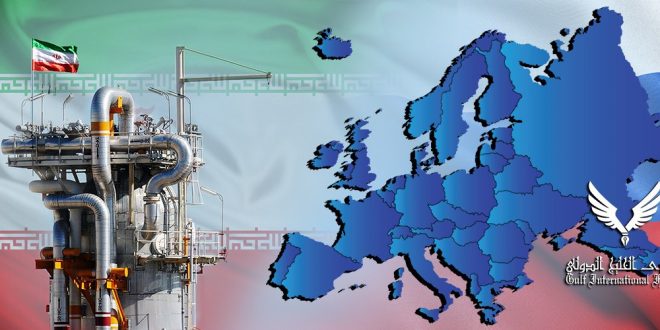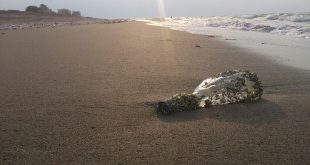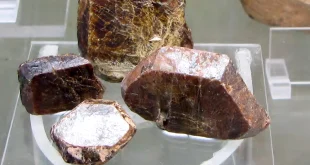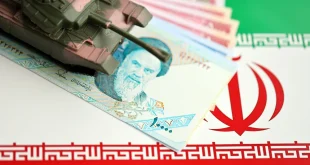The geography of Iran has provided special natural conditions for the country. Iran borders 13 countries, though its relations with many of its neighbors are strained. Iran’s geopolitical realities present a unique challenge to its leadership, particularly when considering the export of oil abroad. Rising tensions between Tehran and the southern regions of the country or the eruption of war with its Arab neighbours could imperil the regime’s long-term objective of increasing oil exports. Addressing this vulnerability requires a review of Iran’s foreign policy structure and a refocusing of foreign and regional policy to court a wider array of potential partners.
The Chalous Gas Field and a New Future for Iranian Gas Exports
Although Iran has the second-largest gas reserves in the world, high levels of waste within domestic gas markets diminish the dividend the state enjoys from its natural resources. The Iranian state has no long-term strategic approach to gas exports. It also lacks a plan to produce gas for export, as gas has never been a factor in Iran’s energy strategy and oil exports are the country’s main source for foreign exchange earnings. Indeed, Iran’s gas strategy promotes more domestic gas consumption in order to limit domestic oil consumption and increase its oil exports.
Iran consumes 244 billion cubic meters of its domestically-produced natural gas; worryingly for the leadership in Tehran, the volume of Iranian gas exports measures only 7% of total domestic consumption. In other words, Iran consumes almost 13 times more natural gas than it exports despite its massive reserves. To unlock potential markets for energy exports, the Ministry of Oil should actively engage in energy diplomacy in regional markets to cooperate with gas exporting and importing countries.
The discovery of a massive gas deposit, the Chalous Field, in the Caspian Sea provides Iran an opportunity to diversify its exports and play a larger role in regional energy markets. According to Ali Osuli, CEO of Iran’s Khazar Exploration and Production Company (KEPCO), it is estimated that Chalous field holds gas reserves equivalent to one-fourth of the huge South Pars gas field, 18 billion barrels of gas condensate, and currently accounts for about 40% of Iran’s total 33.8 trillion cubic meters of gas reserves and about 80% of the country’s total gas production. The Chalous structure has the potential to have huge gas reserves of 120 trillion cubic feet of gas in place. If the Chalous structure is successfully explored, the volume of extractable gas of this structure alone will be 5.1 times the total extractable gas of Azerbaijan and equal to 30% of the total extractable gas of the Caspian Sea basin countries. This presents Iran with an excellent opportunity to tap its natural gas reserves and engage in regional energy diplomacy.
If the initial estimates of the gas reserves in the Chalous field are proven correct, Iranian gas would be able to supply at least 20% of Europe’s gas needs. The successful exploitation of these untapped riches would require export, price, and destination coordination between Iran and Russia, the latter of which dominates the export of energy to Europe.
The ongoing domestic gas shortage notwithstanding, the question remains whether Iran would export gas to Europe even if it had access to greater supply. In a report entitled “Comparison of Gas Exports by Pipeline and LNG,” Tehran’s Parliamentary Research Center examined the profitability of long-range natural gas exports; the Center found that gas exports (whether transported via pipeline or in LNG containers) do not present an economically viable option for the country if oil prices remain below $ 50 per barrel, or if the distance traveled by the pipeline reaches above 3,000 km. The latter condition would most certainly apply to gas exports to Europe, and the future of oil prices remains volatile.
To further complicate matters, the significant exploitation of Iran‘s gas reserves depends on basic foreign investment and the use of state-of-the-art technologies—usually the hallmark of large foreign companies. Russia’s state-owned oil company and Russia’s largest oil producer, have asked the Iranian president to allow Russian companies to export natural gas from the Chalous Field and use Gazprom as an export agent. Such an arrangement could prove beneficial for Iran because Russia is Europe’s main LNG exporter and Gazprom is the only natural gas exporter in Russia. This expanding export capacity by enlisting the help of Gazprom could be beneficial for Iran. If Tehran can successfully negotiate a new JCPOA with the West, a partnership with Gazprom would bring much-needed revenue into the country once sanctions against Iran’s energy exports are lifted.
Iran’s EU Diversification Policy: Opportunities and Obstacles
Since 2008, the European Union has defined a more comprehensive plan to import gas from sources other than Russia through the so-called Southern Gas Corridor. Through this endeavor, the EU partnered with Azerbaijan, Turkey, Egypt, Georgia, Kazakhstan and Iraq to facilitate gas imports, but Iran should seek to exploit this development. Until 2017, three major pipelines formed the corridor: 1) the South Caucasus Pipeline, 2) the Trans-Anatolian Pipeline, which passes through Turkey, and 3) the Trans-Adriatic Pipeline, which passes through Albania and Greece to Italy. Most of the gas in this corridor is supplied by the Republic of Azerbaijan from its sources located in the Caspian Sea with the official and express financial support of the European Union. To effectively integrate itself with the Southern Gas Corridor and reap the rewards of expanded export capacity, Iran will have to engage diplomatically with its neighboring states.
It should also be noted that Iran has signed important strategic agreements with China (25-year agreement) and Russia (20-year strategic agreement) which affect its geopolitical considerations when exporting gas.
Other states’ interests could thwart Iranian ambitions to export natural gas to Europe. For instance, Russia is deeply concerned with energy exports and considers energy a key pillar of its foreign policy. This reality has obvious implications for Iran, as Moscow has shown its willingness to use any and all measures to maintain its share of the global energy market. Russia does not desire a new competitor in the European market, whose domination it considers a vital interest. Thus, even if the extraction of the Chalous gas field is economically viable, Iran will have a difficult time bringing it to Europe. To circumvent these obstacles, Iran could convert the gas produced from the Chalous field into LNG and sell it on the global LNG market, but Tehran currently lacks LNG production facilities, the construction of which would be expensive and time-consuming.
Finally, it is important to recognize that the E.U. has increasingly focused on energy transition and prioritized reducing the share of fossil fuels in their energy portfolio. The trend of investment in renewable energy over fossil fuels within the bloc has thus increased sharply. Annual natural gas consumption has even declined in some European countries. These developments demonstrate that Europe does not need natural gas imports as urgently as it may have in the past. Even if such a need were to arise in the future, Iran would need to provide the required capital to build a pipeline to transport natural gas from the Chalous field—a difficult task while under the pressure of economic sanctions.
Iran finds itself at the center of geopolitical and economic competition, within which the discovery and exploitation of the Chalous Field represents only a small issue. Russia is concerned about Iran’s geostrategic competition in the field of gas exports and has thus played an important role in diverting Iran’s gas exports away from Europe. On the other hand, the European Union is deeply concerned about dependence on Russia, from which it receives more than a third of its gas. Moscow has shown in several tense geopolitical disputes that it will not hesitate to use its gas supplies for political purposes and to place pressure on European capitals. While the European gas demand could represent an opportunity for Iran, Tehran will have to effectively drive a wedge between Europe and Russia over gas imports to access European markets, all while avoiding ostracizing Brussels or Moscow in its efforts.





